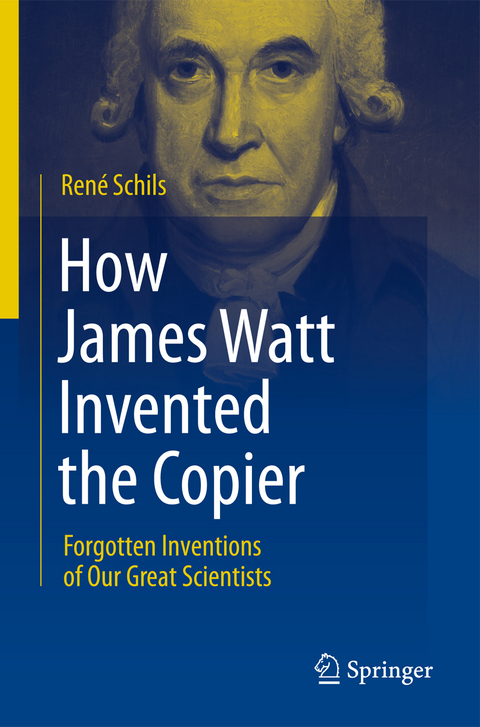How James Watt Invented the Copier
Springer-Verlag New York Inc.
978-1-4614-0859-8 (ISBN)
Since 2005, René Schils has been a freelance science writer and in the past five years has written nearly twenty articles on this topic for the Dutch science magazine ‘Natuurwetenschap en Techniek’. Subsequently, these articles were used as the basis for this book. Currently, René writes popular science articles on varying topics for several science magazines, which can be viewed at the author’s website www.reneschils.nl.
Johannes Kepler: Keplers laws – Snow crystals.- Robert Hooke: Hooke’s law – Surveyor and architect.- Edmond Halley: Comet – Mortality tables.- Daniel Bernoulli: Bernoulli’s principle – Utility function.- Benjamin Franklin: Electricity – Gulfstream.- Joseph Priestley: Oxygen – Carbonated water.- James Watt: Steam engine – Copier.- Edward Jenner: Pox vaccine – Cuckoo’s nest.- John Dalton: Atomic theory – Colour blindness.- Thomas Young: Light – Rosetta Stone.- Justus von Liebig: Fertilizer – Stock.- Charles Darwin: Evolution – Earthworms.- William Thomson: Absolute temperature – Transatlantic cable.- James Clerk Maxwell : Maxwell equations – Colour photo.- Alexander Graham Bell: Telephone – Artificial resuscitation.- Hendrik Antoon Lorentz: Electron theory – Enclosing dyke.- Svante Arrhenius: Ionic theory – Global warming.- Pierre Curie: Radioactivity – Piezo-electricity.- Walther Nernst : Thermodynamics – Neo-Bechstein piano.- Albert Einstein: Relativity – Refrigerator.- Harlow Shapley: Center of the Milky Way – Ants.- Erwin Schrödinger: Wave equation – What is life?.- Enrico Fermi: Nuclear reaction – Fermi’s paradox.- Rosalind Franklin: DNA – Carbon.- George Gamow: Big Bang – Genetic code.
| Zusatzinfo | 17 Illustrations, color; 81 Illustrations, black and white; VII, 170 p. 98 illus., 17 illus. in color. |
|---|---|
| Verlagsort | New York, NY |
| Sprache | englisch |
| Maße | 155 x 235 mm |
| Themenwelt | Sachbuch/Ratgeber ► Natur / Technik |
| Geschichte ► Teilgebiete der Geschichte ► Technikgeschichte | |
| Naturwissenschaften ► Physik / Astronomie ► Allgemeines / Lexika | |
| Schlagworte | Darwin earthworms • Einstein refrigerator • famous scientists • famous scientists unknown inventions • Franklin gulfstream • history of natural sciences • Kepler snowflakes • scientists forgotten inventions |
| ISBN-10 | 1-4614-0859-8 / 1461408598 |
| ISBN-13 | 978-1-4614-0859-8 / 9781461408598 |
| Zustand | Neuware |
| Haben Sie eine Frage zum Produkt? |
aus dem Bereich




